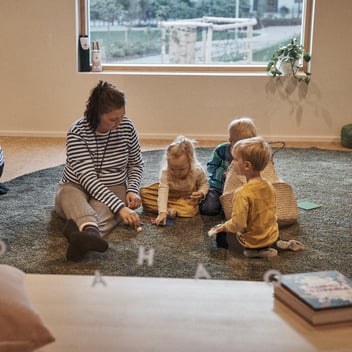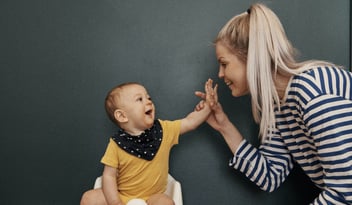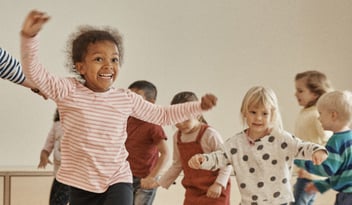The Story & Science Behind the HEI Schools Design
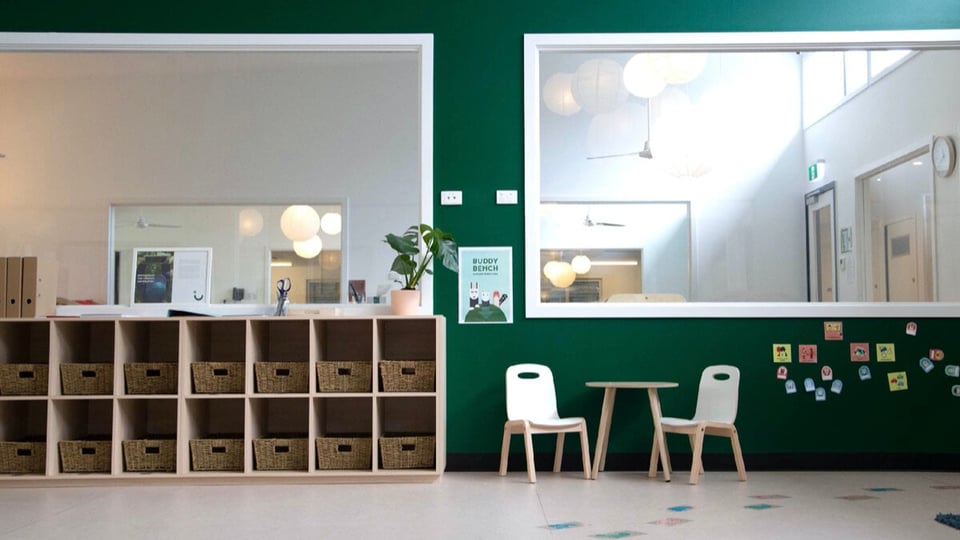
How it all began
Design, especially everyday design, is an integral part of Finnish culture. Viewed from a broad perspective, functional design underlies all processes that bring about social, economic and cultural improvement. Besides that, by combining aesthetic and function, along with close attention to detail, good design makes everyday life far more fluent and pleasant.
At HEI Schools, we take that same approach to the design of our learning spaces. Created in collaboration with Finnish architects, furniture designers, pedagogical experts and design professionals, our award-winning concept takes the best of Finnish design and pedagogical research to give children a learning environment that promotes both their learning and wellbeing. Because we take children’s perspectives seriously, we make sure all elements of our design receive their approval. For example, we included children in our initial prototyping, and we used their help when we participated in Helsinki Design Week. They are a part of our continual process to improve our spaces, and we could not accomplish our work without them!
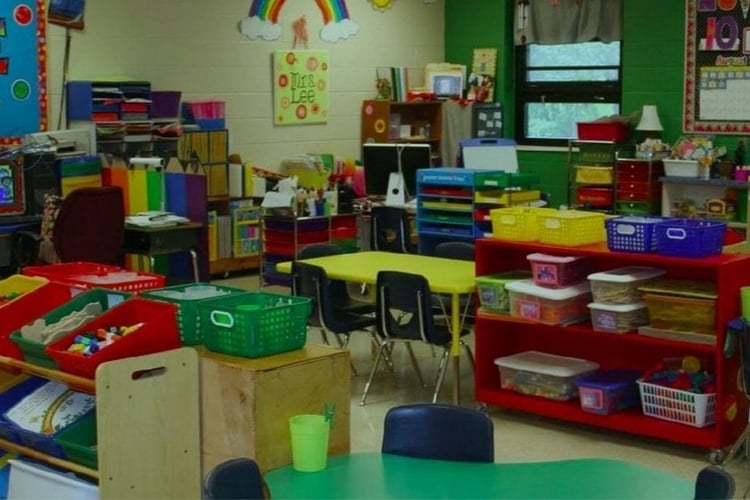
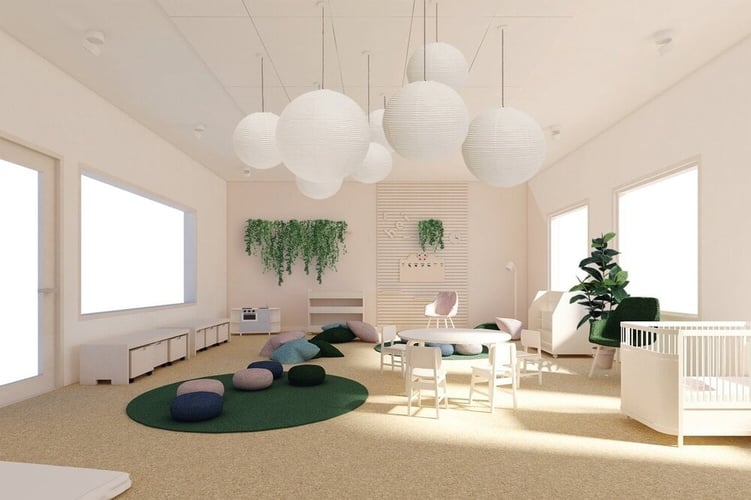
While typical kindergartens tend to be packed with bright colors, visible toys and extra learning materials, our HEI Schools kindergartens aim to calm and focus children. We strive to make our spaces feel like home with soft, natural materials, low-hanging lamps and as much natural lighting as possible. We worked closely with our academic partner, University of Helsinki, to incorporate pedagogical research into every aspect of the space, and the following principles are central to our process.
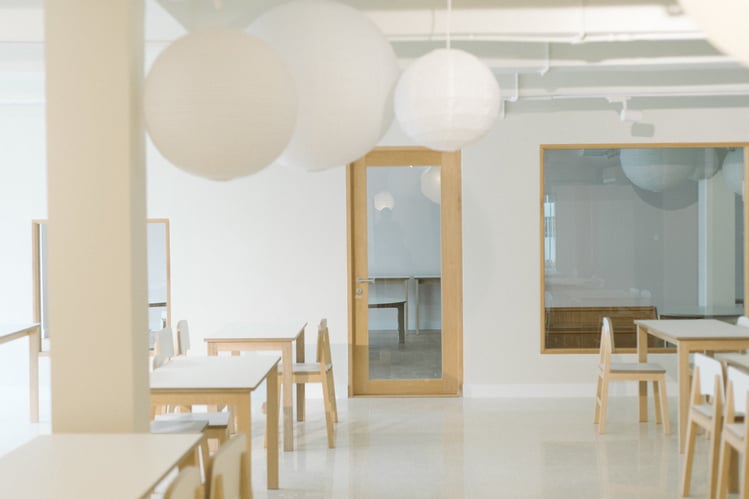
The principles behind our design
1. The Finnish Theory of Design
Besides its education, Finland is well-known for its excellent designers. Alvar Aalto was one such a designer, and his design philosophy is a great source of inspiration for us. He was a proponent of Finnish everyday design, and he believed in the importance of beautiful but useful design that was accessible and affordable. Simply put, he thought that beauty makes people’s lives better. It should therefore be incorporated into the everyday and available not just to the few, but to the many.
Other trademarks of Finnish design are simplicity, minimalism and sustainability. In other words, we should strive to have less things, but those things that we do have should be high-quality, long-lasting and uncomplicated so as to lessen our impact on the environment. We incorporate these elements into the HEI Schools design by investing in sustainable materials, by crafting simple, elegant furniture and structures, and by ensuring that all elements of the learning space are beautiful yet functional for the teachers and children. We build our learning spaces to last, and we hope that the beauty of our spaces brings joy and peace to all who enter.
2. Less Visual Stimulation Leads to Better Learning
Most kindergartens have an overwhelming amount of visual stimulation, from posters to all sorts of learning materials on shelves and colorful decoration. It often feels like visual overload. Despite popular belief, this sort of setup does not aid children’s learning processes. Rather, it tends to harm them.
In a 2014 study [2], researchers found that five-year-old children spent more time off-task in a visually rich environment, in which the walls were highly decorated, than they did in a sparsely decorated classroom. Children in the uncluttered space also performed better on tests that assessed their knowledge of information that was taught in the classrooms, and a later study yielded similar results. Another study found that colorful displays can also promote off-task behavior in classrooms[3], contrary to conventional wisdom.
To that end, we create spaces that are free of elements that are not related to the learning activities. Most learning materials and books are stored away in easily accessible places so children are not distracted by the stimuli while they are learning other subjects, and the walls and other furniture are simple and relatively unadorned. We also use natural, soft colors to promote a sense of calm and focus in the learning environment.
3. Quieter Spaces Promote Language Learning and Information Processing
If you ask anyone who has visited a typical early learning classroom, more often than not, they will tell you about the noise. It is perfectly natural for children to make a lot of noise, especially when they are playing and having fun, and this can make their classrooms quite loud. Floors and walls can only absorb some of the sound, so most of it remains in the classroom, and this can contribute to a somewhat chaotic atmosphere.
However, such noise can be problematic, especially when it comes to language learning. Studies [4] have shown that children cannot understand language as clearly as adults when there is a lot of background noise. This is because they are still developing their language skills, so they need to be able to hear very clearly in order to process and understand speech. It is therefore important that classrooms are calm spaces where teachers and children can exchange verbal communication easily and often, which improves the children’s language learning. Another study [5] found that noise and chaos affect children’s ability to process information from a very young age, making it all the more important that early childhood education spaces minimize external noises as much as possible.
At HEI Schools, we achieve this goal by adding elements that absorb sound, such as carpeting, curtains, pillows and floor materials like cork, to create a quieter atmosphere. This also improves children’s focus because there are less audible distractions throughout the day, and it contributes to a sense of calm in the learning space, which is good for their learning and wellbeing.
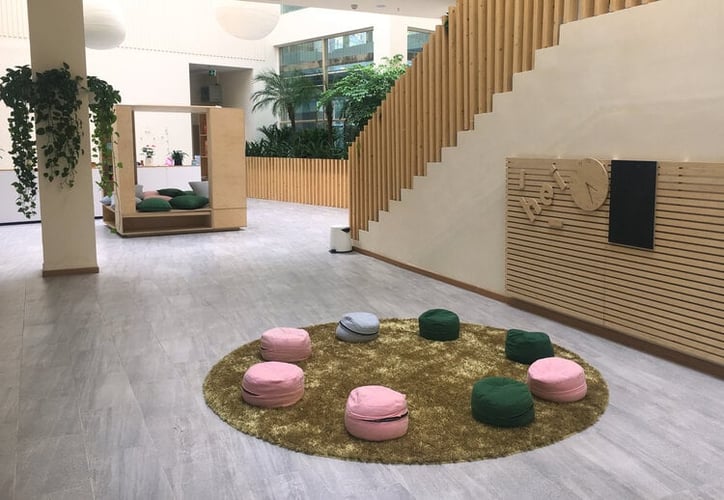
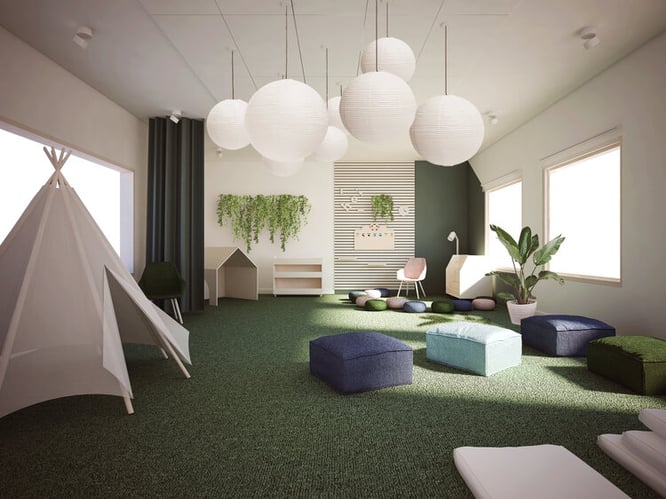
4. Natural Elements Foster Focus and Wellbeing
Connecting with nature is a core element of Finnish educational philosophy. Children go outside often, even in the cold, because exercise outdoors is an important part of the early learning experience. They also learn about nature and the environment throughout their educational journey, and they are taught to be mindful of their impact on the natural surroundings.
Nature also plays a central role in our designs, in part because of its effects on the mind. Studies show that experiencing or seeing images of nature reduces stress, and exposure to green space improves mood and self-esteem. Additionally, time around nature increases one’s attention span and psychological wellbeing.[6] Sunlight also has positive effects on mood [7], which is why we incorporate as much natural lighting into the learning space as possible.
The HEI Schools learning spaces not only emphasize natural lighting, but they also include many natural elements like wooden furniture and plants. These materials positively affect children’s learning experience by enhancing their focus and improving their general wellbeing. Natural materials are also much safer than those that are synthetically made, with the added benefit of being much more durable!
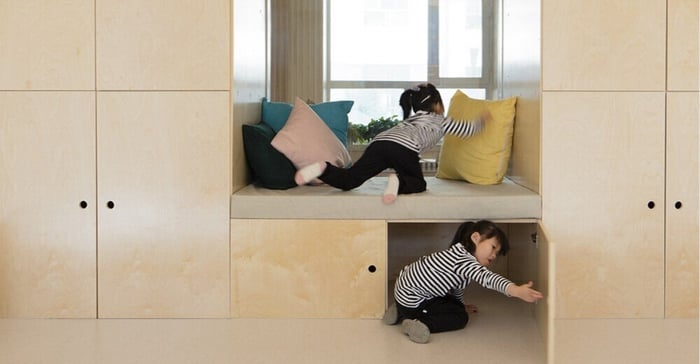
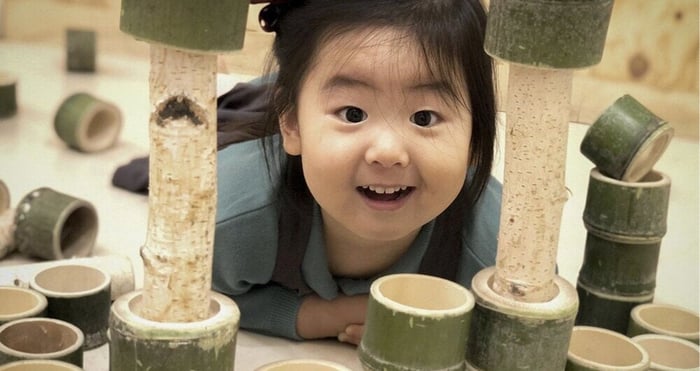
How we keep improving
The HEI Schools design concept is the result of a dynamic, ongoing process. We are always improving based on the latest research in early childhood education and feedback from parents and teachers. For example, we have modified our furniture designs to be more user-friendly for young children, and we encourage schools to use their local wood supplies to build classroom furniture. We collect feedback from teachers about how children move in the learning space, and their input propels our designs forward.
The result? Happy children, teachers and parents! Children who have a tendency to be more excitable display calmer attitudes in the HEI Schools learning spaces, and our teachers find the spaces to be relaxing, beautiful environments to work in every day. Parents are also very happy with the spaces. One satisfied parent at HEI Schools Australia commented:
I love the vibe of the center, that it’s very calm without a lot of chaos.
Take a virtual tour of a HEI Schools kindergarten
Our HEI Schools kindergarten in Bangkok, Thailand opened in 2021, and our partners created beautiful renderings of their space during the planning phase. Take a virtual tour around their Learning Center in the following video to see what it's like!
If you are interested in opening a kindergarten, preschool or nursery, HEI Schools can give you a competitive edge in your local market. Learn more about how you can license our design and concept in our 20-minute webinar recording.

Citations
[1] Higgins, A.T., & Turnure, J.E. (1984). Distractibility and concentration of attention in children’s development. Child Development.
[2] Fisher A., Godwin K., Seltman H. (2014). Visual Environment, Attention Allocation, and Learning in Young Children: When Too Much of a Good Thing May Be Bad. Psychological Science.
[3] Barrett, Zhang, Moffat, and Kobbacy (2013). A holistic, multi-level analysis identifying the impact of classroom design on pupils’ learning. Building & Environment.
[4] Manlove, Frank, Vernon-Feagans (2001). Why Should We Care About Noise in Classrooms and Child Care Settings?. Child and Youth Care Forum.
[5] Tomalskia, Marczuka, Pisulab, Malinowskaa, Kawab, Niedźwieckaa (2017). Chaotic home environment is associated with reduced infant processing speed under high task demands. Infant Behavior and Development.
[6] Ryan, Browning, Clancy, Andrews, Kallianpurkar (2014). Biophilic Design Patterns: Emerging Nature-Based Parameters for Health and Well-Being in the Built Environment. International Journal of Architectural Research.
[7] An, Colarelli, O'Brien, Boyajian (2016). Why We Need More Nature at Work: Effects of Natural Elements and Sunlight on Employee Mental Health and Work Attitudes. PLoS ONE.


